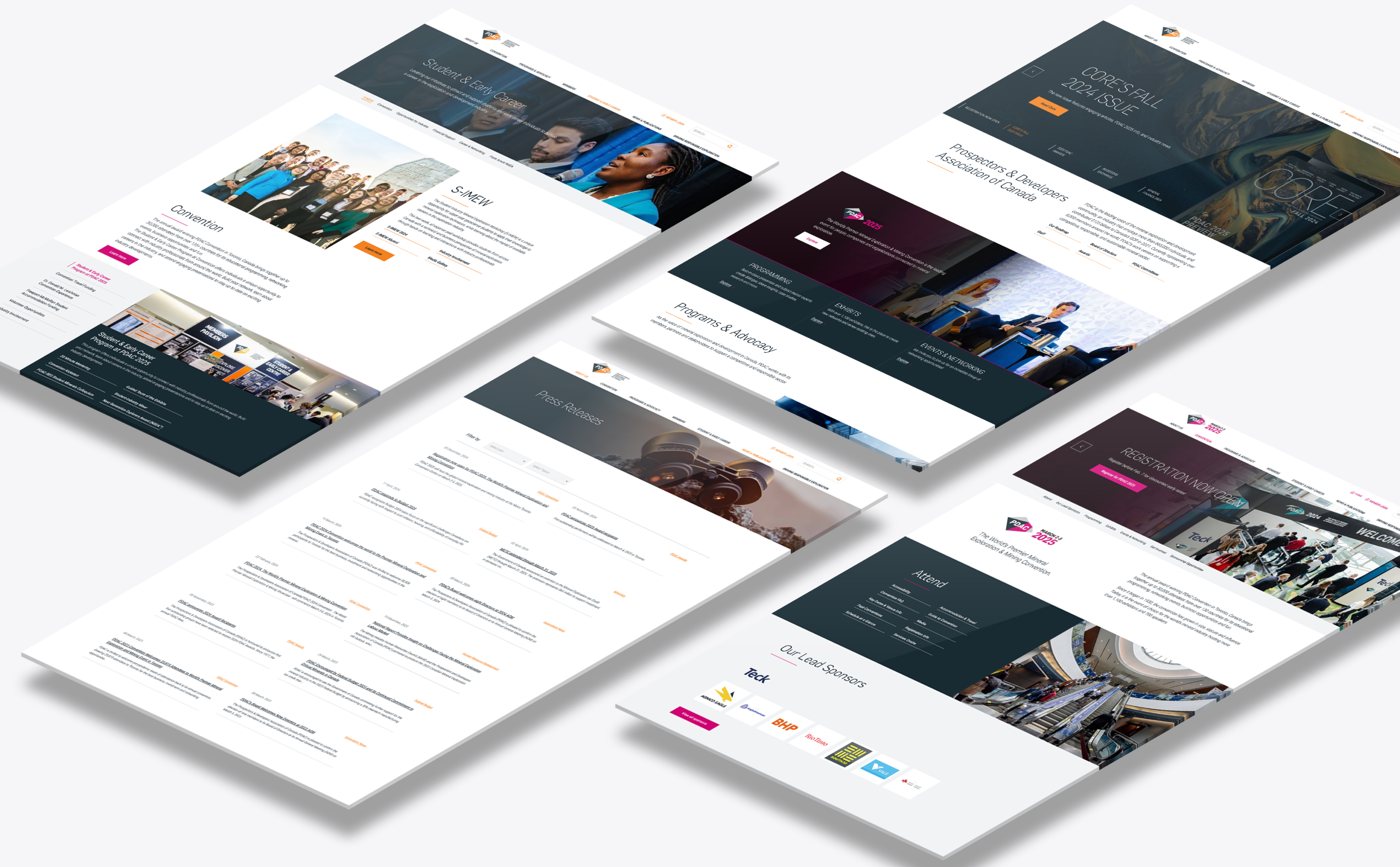Comprehensive UX Research and Analysis for PDAC
The Prospectors & Developers Association of Canada (PDAC) is the leading voice for the mineral exploration and development industry, hosting one of the world’s most renowned mining conventions annually.
PDAC’s website serves as a critical hub for industry professionals, members, and global stakeholders, providing vital information, resources, and updates about the organization and its flagship convention.
Introduction: The Importance of Data-Driven UX Research
Creating a successful, user-centric website is much more than just an aesthetic exercise. For the Prospectors Developers Association of Canada (PDAC), this meant addressing a critical issue: the outdated website’s cumbersome and overly complex navigation. This flaw frustrated users and prevented large sections of important content from being easily found by the diverse audience PDAC serves.
We know that solving such challenges requires a foundation of rigorous, validated UX research. By replacing subjective decisions with data-backed insights, we ensure the redesigned experience aligns with user needs, drives engagement, and delivers long-term value. This case study highlights how our expertise in UX research laid the foundation for PDAC’s modern, high-performing website.

PDAC’s old website faced several key issues:
- Overly Complex Navigation
The existing structure had multiple layers of menus, making it difficult for users to locate content quickly or intuitively.
- Hidden Content
Large sections of valuable information remained buried under poorly organized categories, leading to user frustration and missed opportunities for engagement.
- Diverse Audience Needs
With users ranging from industry professionals to policymakers and event attendees, the website had to meet various unique requirements without compromising usability.
These challenges made it imperative to approach the redesign with a meticulous UX strategy that prioritizes thought-through user journeys, navigation simplicity, and clarity.
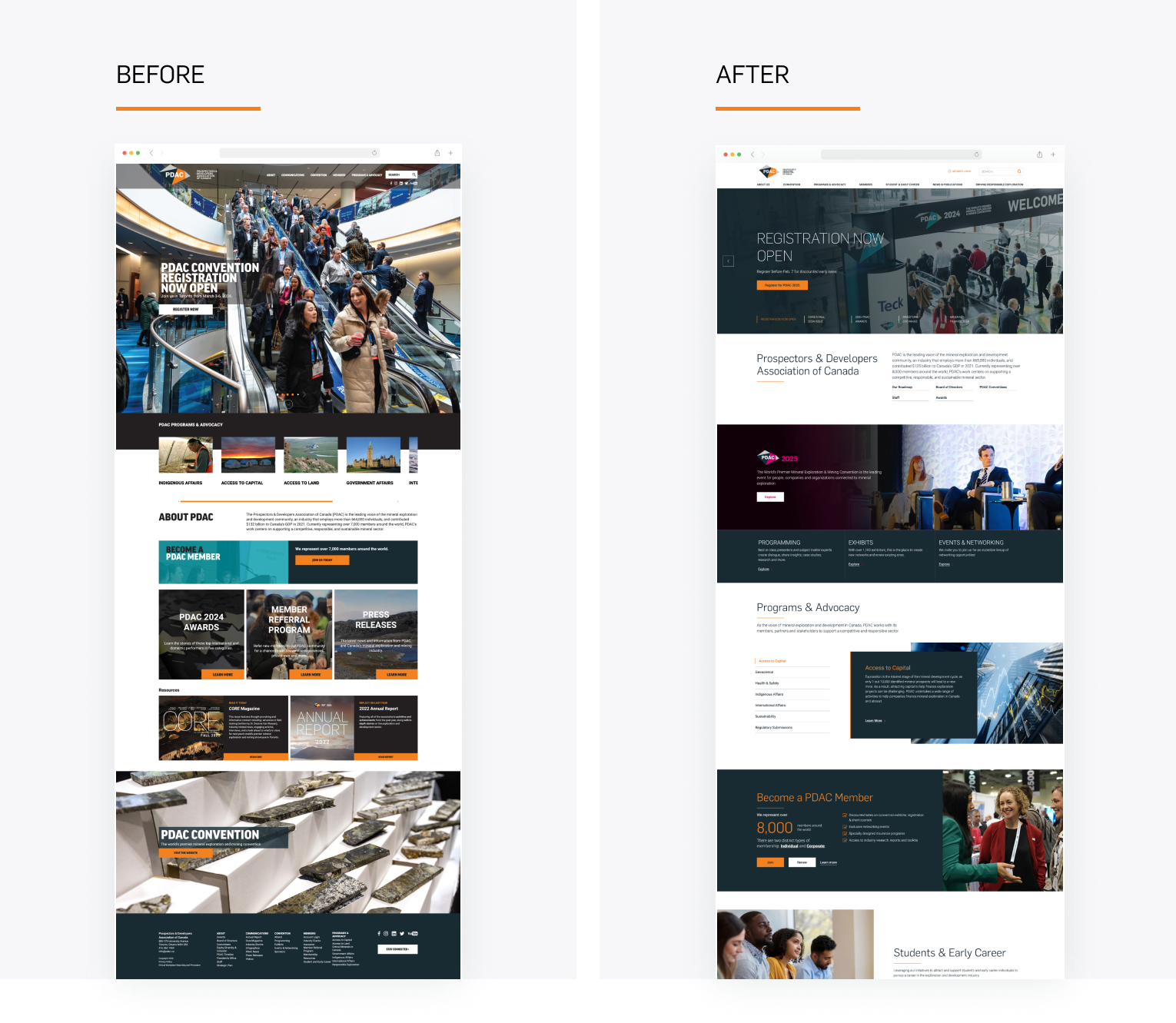
A Holistic UX Research Process
We crafted a multi-faceted UX research strategy to prepare for a data-driven design process. This six-stage approach enabled us to create a user-centred foundation for PDAC.ca’s transformation:
1. Stakeholder Interviews
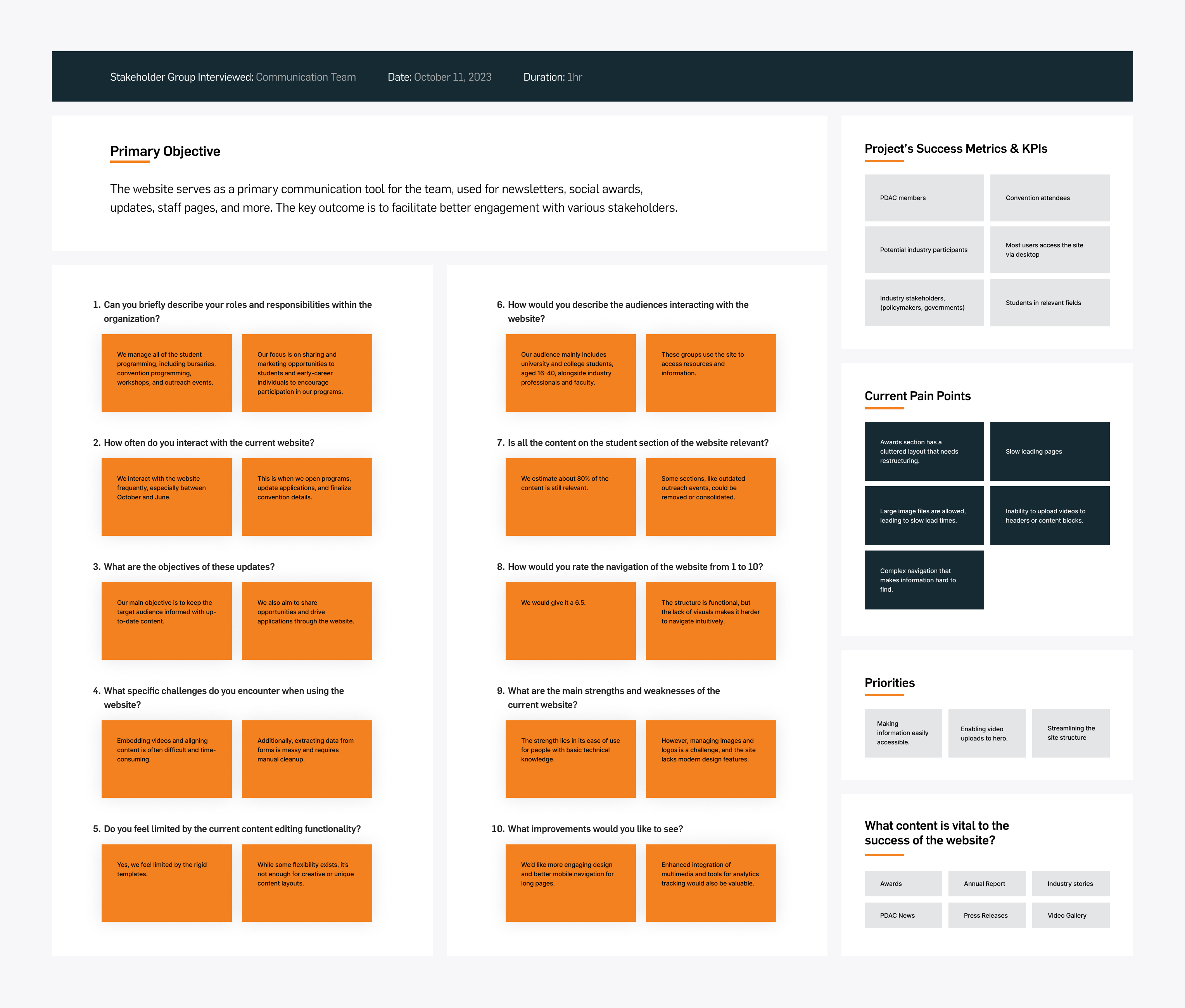
We began by interviewing representatives from PDAC’s key departments, such as conventions, programs, membership, internal affairs, and government policies.
These conversations revealed unique challenges, departmental goals, and critical insights into the site’s role in achieving PDAC’s mission.
Key Finding: Many stakeholders noted that users often struggled to locate crucial information about events, membership, and industry resources, leading to an uptick in support requests.
2. Competitive Analysis

Next, we performed a thorough analysis of similar organizations and conventions. This included benchmarking their online presence, strengths, weaknesses, and opportunities. By understanding where PDAC stood relative to competitors, we could identify gaps and set clear objectives for the redesign.
Key Finding: Competitors often featured streamlined menus and prominently highlighted high-value sections, contrasting with PDAC’s cluttered navigation system.
3. Persona Development
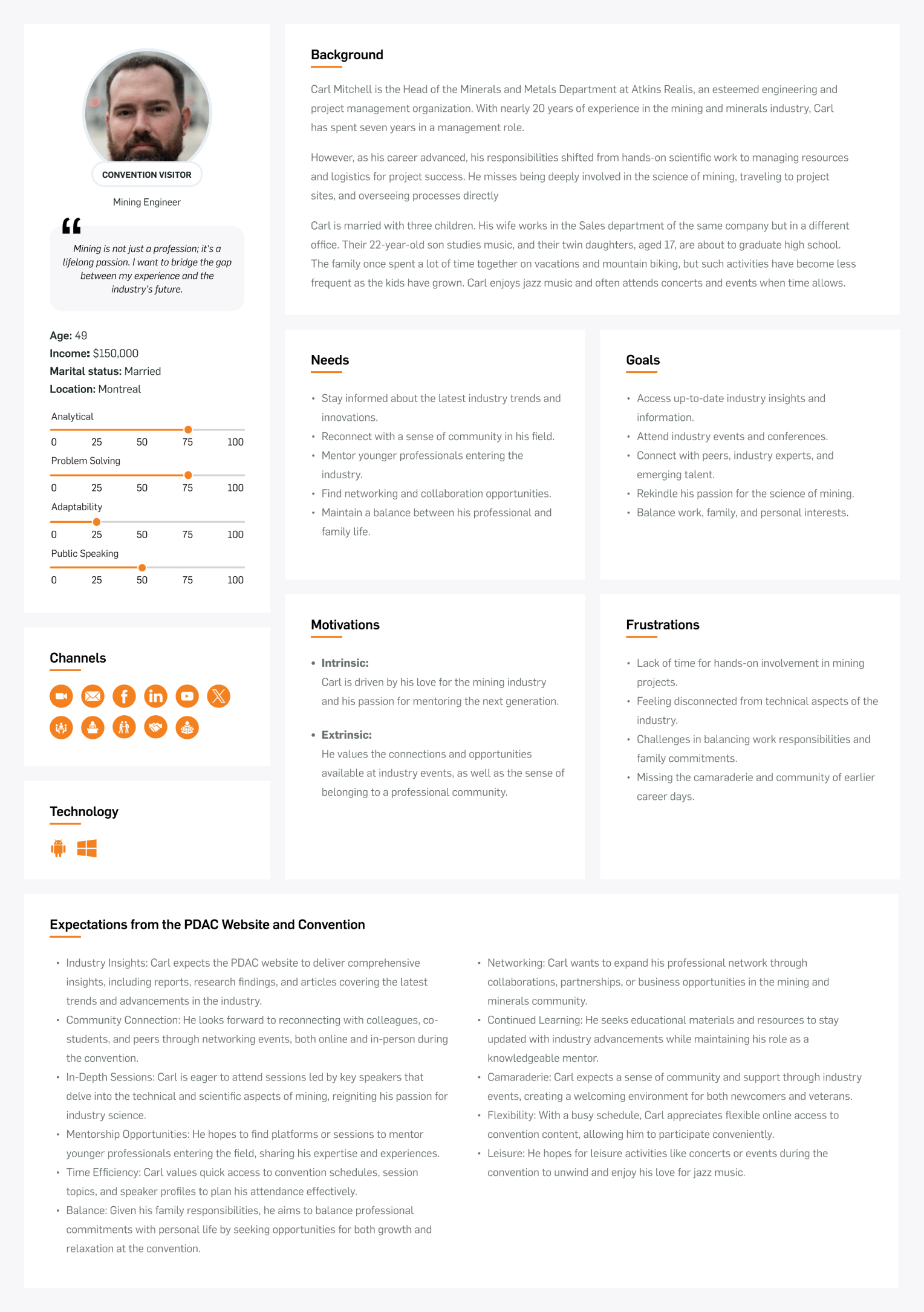
We crafted detailed user personas using data from stakeholder interviews and competitive analysis. Tools like UXPressia allowed us to visualize the behaviours, needs, and pain points of PDAC’s core user groups. These personas represented a cross-section of PDAC’s diverse audience and served as a guiding framework throughout the project.
Key Finding: Users with varying technical proficiency struggled the most with the old navigation, necessitating an intuitive and universal solution.
4. Card-Sorting Exercise
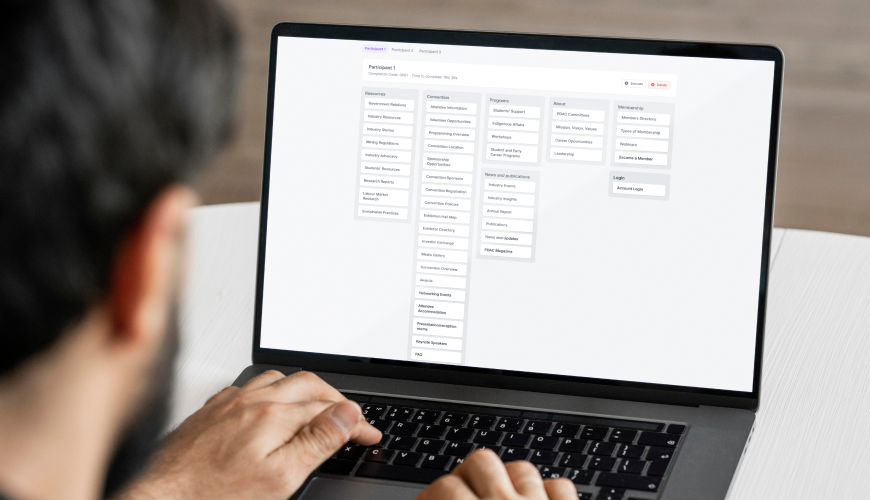
We used UXmetrix to run a card-sorting exercise, enabling users to organize content intuitively. This revealed how users naturally grouped and navigated information, providing critical insights into the website’s structure.
Results: The exercise revealed natural content groupings that informed the new, streamlined navigation structure.
5. User Journey Mapping
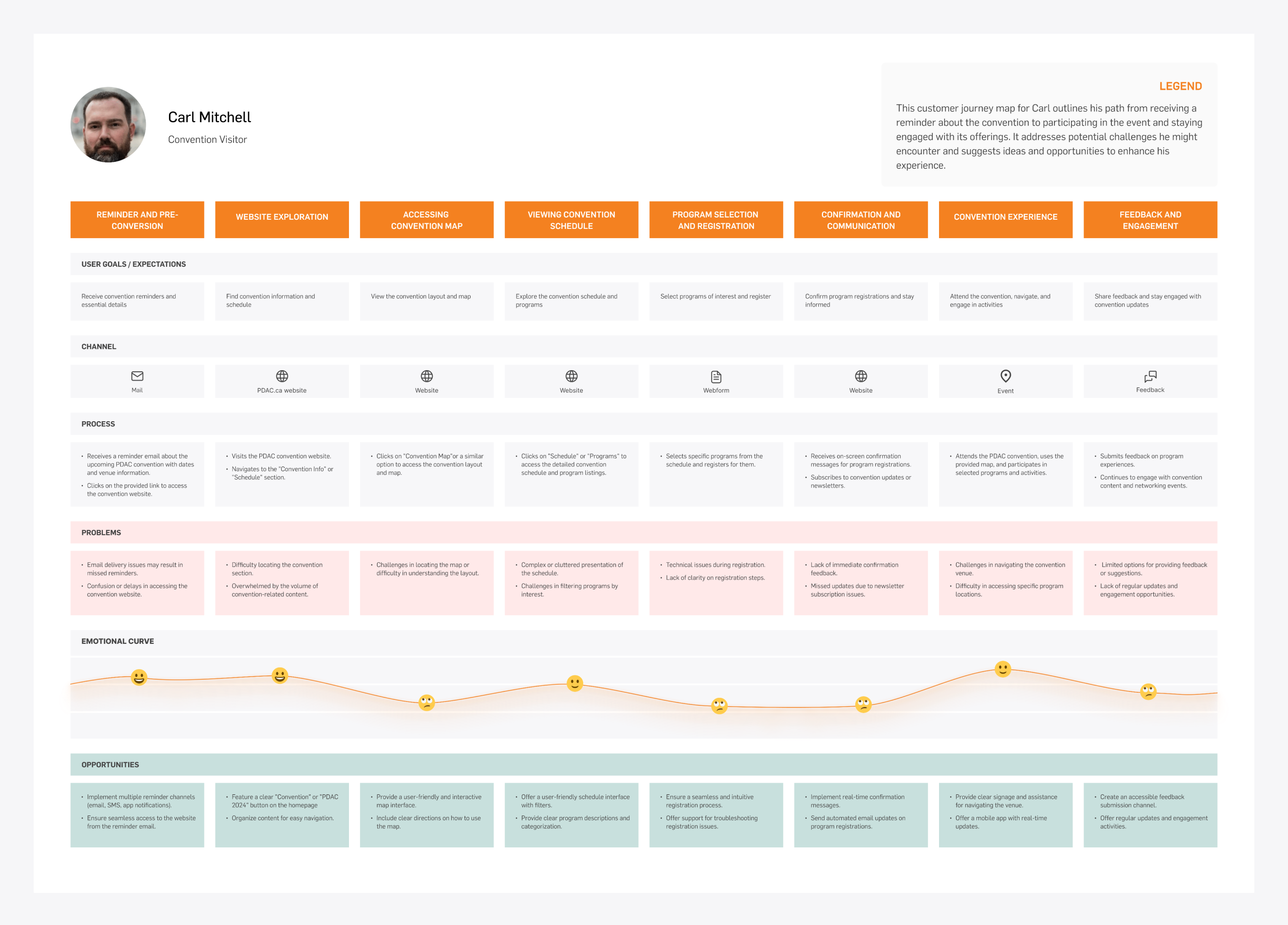
We mapped the most typical user journeys by combining persona data and card-sorting results. These detailed descriptions illustrated how users interact with the website from entry to goal completion, highlighting pain points and opportunities for improvement.
Outcome: Users repeatedly abandoned tasks such as event registration due to convoluted pathways.
6. Information Architecture & Wireframing
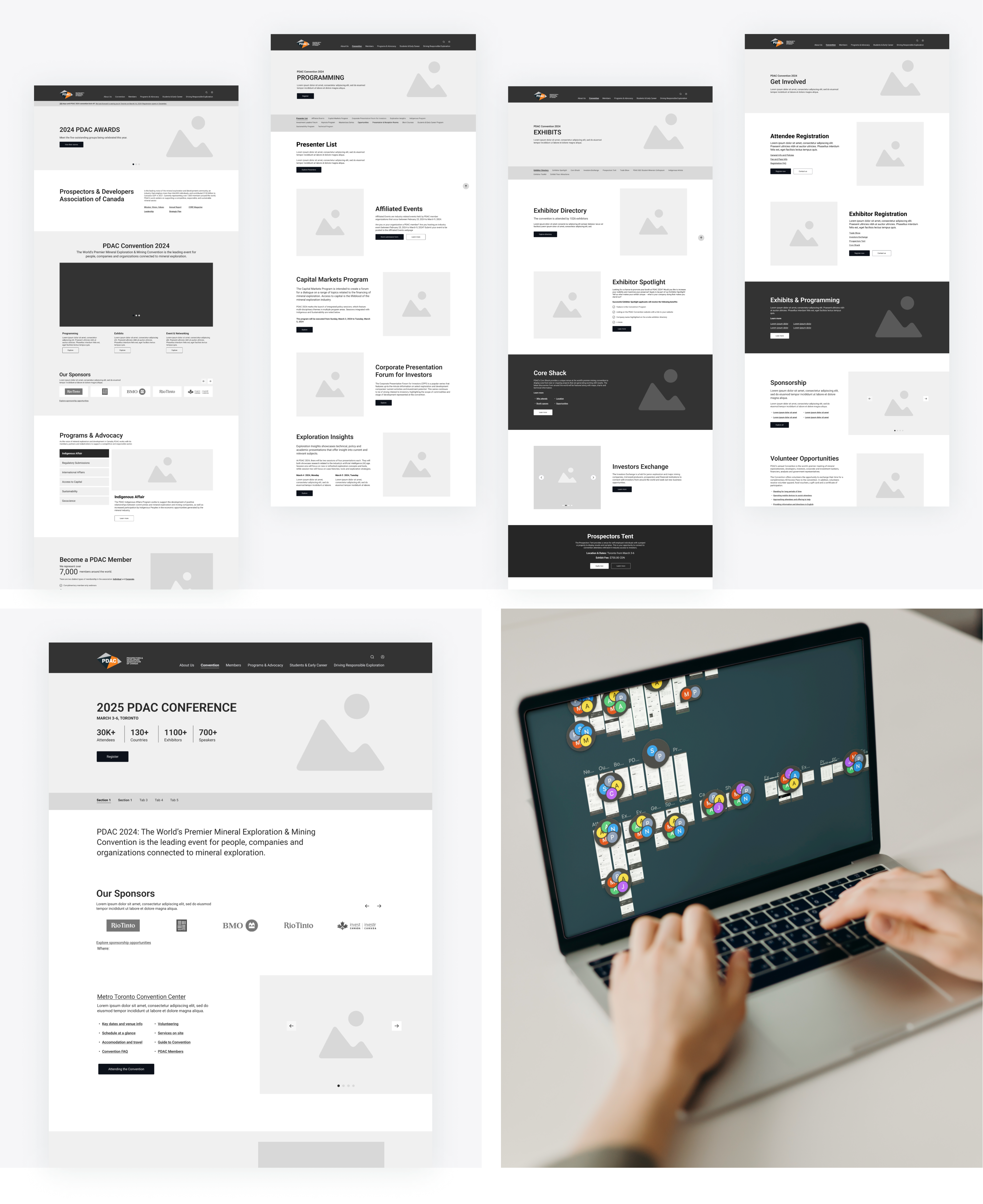
Our research culminated with a comprehensive information architecture for the new PDAC.ca and an initial set of wireframes. These deliverables provided a structured, validated blueprint for the UI/UX design phase, ensuring clarity and alignment with user expectations.
Research-driven approach successfully addressed PDAC’s navigation challenges, resulting in:
- Streamlined Navigation
The new menu structure eliminated redundancies, reduced the number of clicks needed to reach critical content, and provided clear pathways for all user types.
- Enhanced Content Discoverability
Previously buried information, such as event schedules and membership resources, became easily accessible, improving user satisfaction and engagement.
- Catered to Diverse Audiences
Personas ensured that the navigation met the needs of both tech-savvy users and those less familiar with digital interfaces.
- Alignment with Goals
The updated site structure supported PDAC’s organizational objectives by reducing friction and improving user outcomes, such as event sign-ups and policy downloads.
